

There are no gatekeepers—no literary agents or publishers standing in your way. This allows for diversity to flourish and for underrepresented voices to finally have a space to share their work.
Not only are the barriers to entry lower, but the margins are higher. When you work with a traditional publisher, they have to take their cut. By self-publishing your own book, you can earn more for each book that you sell.
When you self-publish, you own your work and have complete control over the publishing process. For a lot of authors who have poured their hearts and souls into writing a book, it’s very important for them to have power to make decisions throughout the publishing process.
As technology has improved, self-published authors now have access to high-quality printing and book distribution networks similar to traditionally published authors. Your self-published book will look like the other books on the shelves.
This might sound obvious, but we can’t overlook the writing process!
Waking up every day and putting in the work to write a book is no easy feat.
Here are a few of our favorite writing tips and resources to get your book ready for the next step: 7 Essential Writing Tips for Authors.

Writing a book is a huge accomplishment. If you’ve made it that far, we hope you take a moment to stop and congratulate yourself on a job well done. Now, let’s get ready to share it with the world!
There are a few different types of editing—and each serves a unique purpose for a manuscript. You’ll have to assess your work to determine what level of editing to start with.
| Things to Consider |
|---|
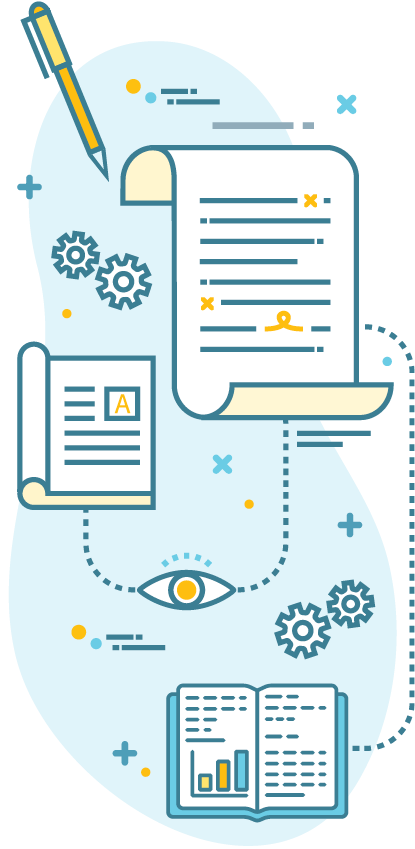 Manuscript Critique Comprehensive Edit / Line Edit Copyedit Proofread |
The next step is designing your book! There are two main steps in the book design process: interior design and book cover design.
Interior design might not sound like the most exciting part of the design process, but it is necessary to create a professionally published book. Typesetting, commonly referred to as book formatting, has “rules” for widows, orphans, hyphens, and various other elements within a book to make it more readable, ensuring a pleasant reading experience for your audience.
Your book cover design is the first impression readers have of your book. While it’s important to be unique, it’s equally important to pay attention to what comparable covers in your genre look like.
Visit your local bookstore and look at the books in your genre. What are the trim sizes? What do the front covers look like? The spines? Take note of the imagery, the fonts, the colors, and more. Observe and ask yourself, what elements of these book covers do I like? How can my book cover stand out—in a good way?
The back cover of the book will be made up of common elements such as book reviews, the book description, author bio, and barcode. The spine often contains the name, author, and publisher logo. Study these elements to make sure that your book will fit in on the shelf, and booksellers will feel comfortable stocking it.
A professional book cover designer can help steer the creative direction—but you know your book best, and it’s important for you to bring your own ideas to help create a cover that brings your book to life.
What exactly is book metadata, and why is it important?

Book metadata may sound complicated, but it’s relatively straightforward. It consists of all the information that describes your book, including your title, subtitle, price, trim size, author name, book description, and more.
Writers often ask for tips on how to come up with a book title.
A good rule of thumb is to follow the PINC Acronym, coined by Michael Hyatt.
| You Want Your Title to Be |
|---|
|
Original Memorable Searchable |
As you’re brainstorming ideas for your book title, keep in mind that you have an opportunity to enhance your short title with a longer subtitle. A good book subtitle varies from one genre to another, but here are a few subtitle examples to get you started.
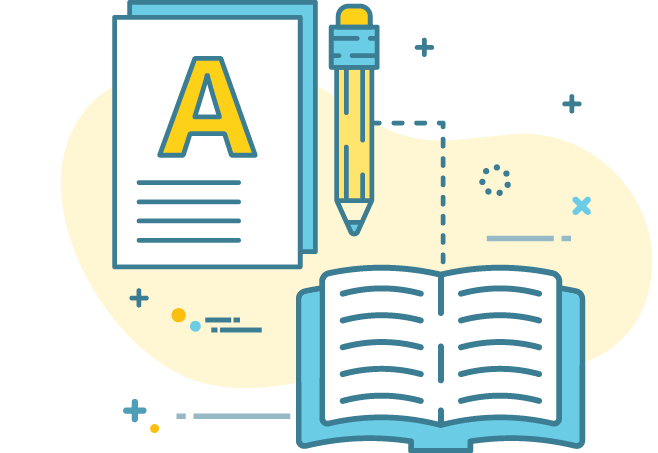
The cover of your book draws a person in…the title intrigues…and the book description closes the deal.
So, how do you write a good book description?
Another tip for writing your description—look up reader reviews for books that are similar to yours. What language are they using? Let their descriptions of similar books help guide you as you write yours.
Your description is more than just text on the back cover of a book. It’s detailed, descriptive copy that will be used in your marketing and help your book’s discoverability. You want your description to appeal to a person picking it up off the shelf at a bookstore, as well as Google’s search algorithm. The keywords in your description impact your book’s discoverability online—so be sure to keep keywords in mind as you write and incorporate them into your description when it’s natural and appropriate.
You’re probably wondering what is an ISBN?
ISBN stands for International Standard Book Number. It’s an internationally recognized identification number, similar to any product number you would find on other products you buy, like a box of cereal or a pair of shoes.
Do you need an ISBN?
You need an ISBN if you want your book to be available for sale in bookstores or with an online retailer or wholesaler. You’ll want to purchase this before your book designer begins work on the cover of your book, so that it can be included in the back barcode.
If you don’t want your book available for sale, IngramSpark can assign a SKU to your book for printing and manufacturing purposes only. If the book is not available for sale with an ISBN, then you will be the only person capable of ordering a copy of your book. You might select this option if you’re printing a book for personal use or as a gift for a friend.
Many self-publishing platforms offer indie authors the opportunity to use a free ISBN. At IngramSpark, we highly recommend that you purchase your own ISBN.
How many ISBNs do you need?
You’ll need an ISBN for each format of your book. Let’s say you want to publish hardcover, paperback, and ebook versions of your upcoming book—that means you’ll need to purchase three unique ISBNs.
What’s the difference between an ISBN and a barcode?
An ISBN acts like a product number, while the barcode is how the actual number is translated and readable by a scanner. If you want your book to be made available in brick-and-mortar bookstores, you’ll want to include a barcode with your ISBN.

BISAC codes essentially identify what your book is about – the primary genre(s), topic(s), and theme(s). While a reader might not be trained to search for books based on a BISAC code, retailers and booksellers will use your BISAC code to determine in which category to place your book on their website, or where to shelve it in their bookstore.
For a full list of available BISAC codes, see BISG’s Complete BISAC Subject Headings List.
| How to Choose BISAC Codes |
|---|
|
First Code = Most Specific Choose Three Be Honest |
If you haven’t yet, now is the time to choose how you’re going to share your story with the world.
There are various self-publishing companies to choose from—but IngramSpark provides many features that you won’t find anywhere else.
IngramSpark offers indie authors and publishers the ability to create professional print books (paperback and hardcover) and ebooks. With IngramSpark, you can self-publish a book and make it available to 45,000+ retailers and libraries—in stores and online—through our global distribution network.
In addition, IngramSpark authors receive:
Some self-publishers simply wish to print a select number of copies, and not enable their title for distribution—and you can do that! However, if you’re looking to reach the masses, IngramSpark’s distribution network has you covered.
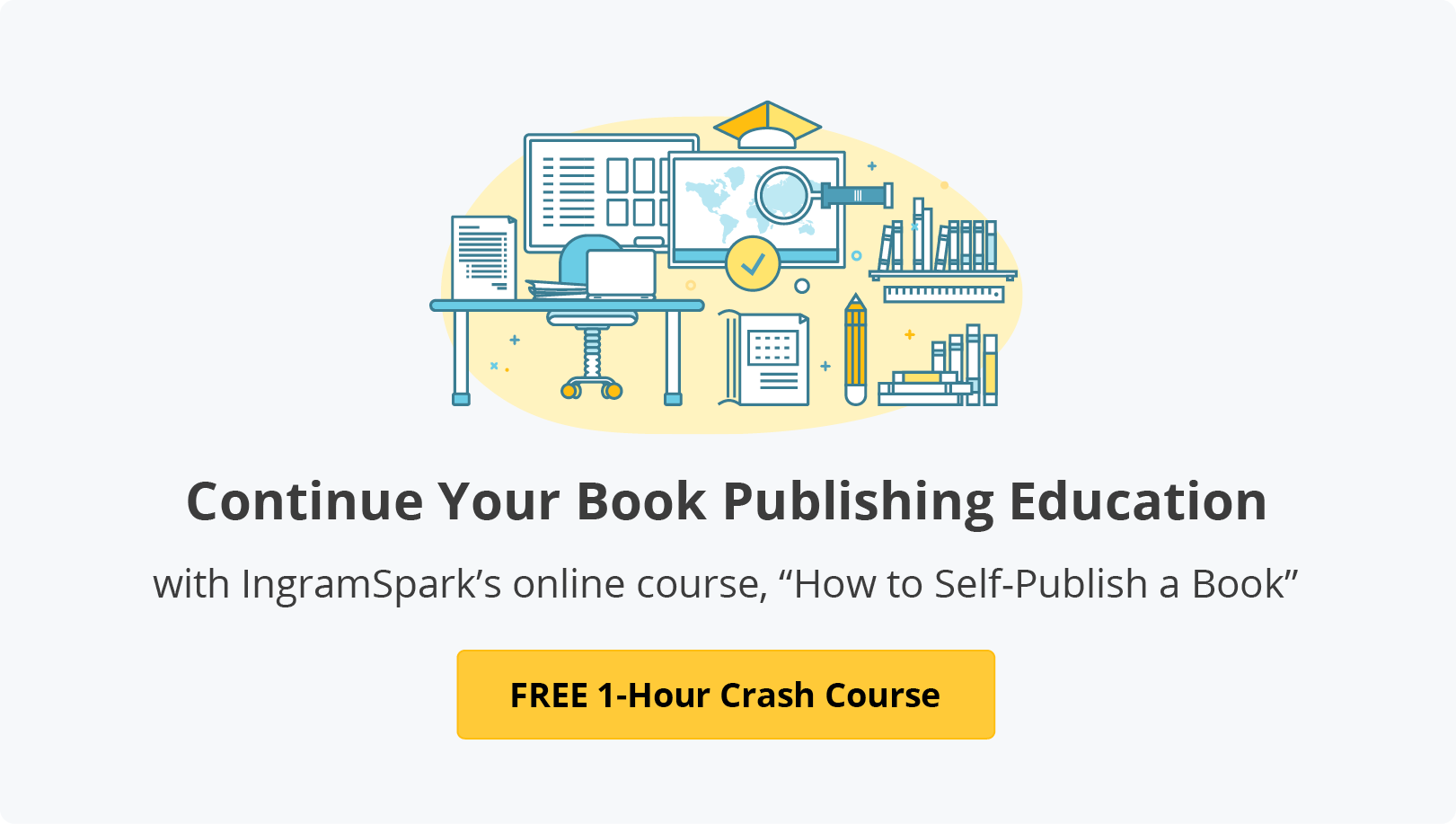
If you haven’t yet, now is the time to choose how you’re going to share your story with the world.

Book distribution used to be a major stumbling block for self-published authors. They would spend weeks, months, even years writing their book. They would go through the editing, design, and printing process—and then would have no way to get it into bookstores and libraries.
Now, indie publishers can receive the same book distribution channels available to major traditional publishers. IngramSpark makes titles available to 45,000+ retailers, libraries, schools, and e-commerce companies including Amazon, Barnes & Noble, Indigo, Foyles, Waterstones, and more across the globe.
For more than 50 years, Ingram has developed relationships and connections within the book industry to allow your book to be available to the masses. We have print facilities in the United States, United Kingdom, and Australia, and we have print channels in China, Germany, India, Italy, Poland, Russia, South Korea, Spain, and Brazil. By self-publishing with IngramSpark, you’re giving your book the best chance of reaching a global audience.
Learning how to market a book is essential for indie authors.
When you take the time to write, edit, and design a book, it’s easy to get wrapped up in the to-do list and never stop to think about marketing until a few weeks before your publication date. This is a big mistake for self-published authors!
While this is one of the last steps in our self-publishing process, we highly suggest that you begin thinking about your marketing strategy during the writing process. Building an author platform doesn’t happen overnight.
Consider the following tactics to market your book:
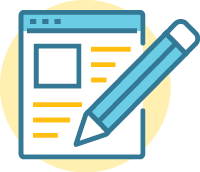
It’s important to have your own website when you publish a book. This lends credibility to your name as an author and is a great place for readers to go to learn more about you, your book, your events, and more. If you hope to create an engaged audience over time, a website is the first step.

If you aren’t already on social media, then it’s time to look at creating some social accounts. You don’t have to be active on all social channels. Pick two or three that you enjoy—but make sure you ask yourself, where are my readers? If you wrote a young adult novel, you won’t have success promoting it on LinkedIn. Consider the demographics of each channel before devoting your time and energy to it.
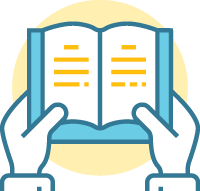
ARCs are copies of your book that are printed in advance to generate buzz for your book. You can send ARCs to a bookseller to inquire about stocking copies for the release date or to book reviewers to gain reviews for your book before your publication date. ARCs are also used to get endorsements, which can be added to the final cover of your book before printing.
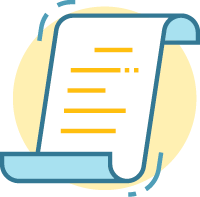
A tip sheet can also be referred to as a “sales sheet” or a “one sheet.” This one-page paper contains high-level, relevant information about your book—basically, your high-level metadata such as the title, subtitle, publisher, publication date, etc. You can send this to bookstores alongside an ARC, or to the press when requesting media.

Whether it’s your book launch party or an author reading, events are a great way to connect with readers in your community. Bookstores and libraries are great options, but you should also think outside the box. What other venues might want to feature your book? If you wrote a cookbook, perhaps there’s a local winery or brewery where you can pair some of your tasty food with some local beverages.
Marketing your book can be fun when you take the time and effort to understand your audience and provide them with a valuable reason to join your tribe and ultimately, purchase your book!
The indie publishing community is a tight-knit, supportive group of creators, entrepreneurs, and go-getters.
Find like-minded people who want to see you succeed. Share your work with them and ask for feedback along the way.
There’s an online #WritingCommunity that’s incredibly active. Whether you’re on Facebook, Instagram, or Twitter, every day there are writers and authors sharing tips and encouragement to help each other succeed. Your community might have a writing collective that offers courses, workshops, and meetups. Your local independent bookstore likely has resources to help you succeed in publishing, and the booksellers can help you understand what they look for when they choose whether or not to stock a book. Your local librarians can give you insight into what they look for in a self-published book, and what the local community is most interested in reading. Take the time to immerse yourself in your local literary community before you publish your book. This will make your job much easier when it’s time to turn around and ask for their support.
The cost to self-publish a book varies depending on your budget, the type of book you’d like to print, and ultimately, your publishing goals.
Below are the six most common areas in which you may spend money to successfully publish a book.
The cost to edit a book varies widely based on a few factors.
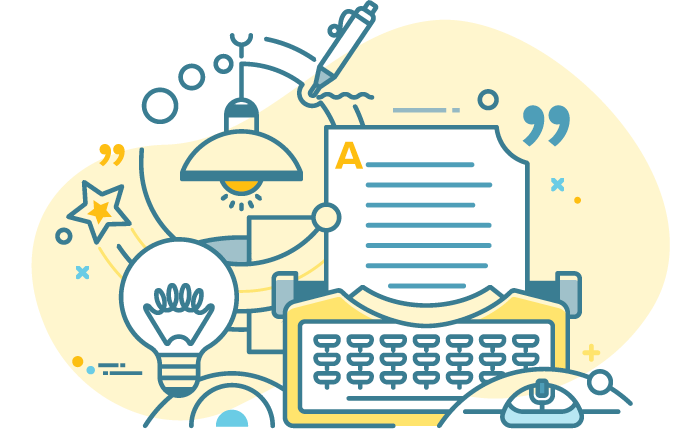
Some editors charge per word, some charge per page, and some charge per hour. The Editorial Freelancer Association provides rough guidelines to give you an idea of common editorial rates.
When you’re ready to hire an editor, do some research and request a few different quotes. Meet with them, if possible, or have a conversation to get to know whether or not they’ll be the best editor for your book’s content. Have they edited in that genre before? Do you feel like they understand your writing style? Ask them for references or examples of their work to make the most informed decision.
The typesetting process mainly focuses on readability, such as proper spacing and fonts. The cost to typeset a book will vary depending on length, genre, and whether or not you’d like to package it with a final proofread.
According to data from Reedsy, a marketplace for book publishing professionals:
The price of typesetting will increase based on the number of images, graphs, and tables in your book.

The typesetting process mainly focuses on readability, such as proper spacing and fonts. The cost to typeset a book will vary depending on length, genre, and whether or not you’d like to package it with a final proofread.
The price of cover design is directly related to a designer’s experience. If you’re going to publish both print and ebook versions (which we recommend), make sure to look for a cover designer who can design both the print and ebook cover. Ask to see examples of a designer’s work before signing a contract and expect to spend at least $500 for a professional cover design.
One publishing expense you’ll incur is purchasing an ISBN, if you choose not to use a free ISBN. This is necessary if you’d like to enable your book for distribution, and each format of each book you publish must have its own unique ISBN.
As part of our catalog integrity initiative, we require that ISBNs are valid and properly acquired. Each country has a single approved and designated agency that issues ISBNs for publishers and self-publishers located in that country. Bowker is the official ISBN agency for the US; Nielsen is the official ISBN agency for the UK and Ireland; Thorpe-Bowker is the official ISBN agency for Australia. IngramSpark does business in many other countries, so we encourage each customer to ensure they are acquiring their ISBN from their country’s approved ISBN Agency. You can find the approved ISBN agency for your country on the International ISBN Agency's Website.
For U.S. customers, ISBNs can be purchased from Bowker directly through your IngramSpark account for $85 each. You can also buy a block of ten ISBNs from Bowker for $295. At IngramSpark, we believe it's in your best interest to be recognized as the owner of your work and a publisher in your own right, which is why we encourage publishers to purchase their own ISBNs.
If you want your book to be available in brick-and-mortar bookstores, you’ll need a barcode in addition to your ISBN. Some ISBN services sell barcodes, as well as ISBNs, but you can use IngramSpark’s book cover template generator to get a free barcode.
The cost to print and ship a book with IngramSpark depends on the following:
IngramSpark has a Print and Ship Calculator to help you understand how much it will cost.
When determining your overall publishing budget, ensure that you factor in a portion for marketing.
According to a NetGalley study, "as authors' budgets increased, so did their corresponding spend on marketing and advertising."
Investing in marketing initiatives that allow you to track dollars directly to sales is a good tactic for those with a smaller budget and limited freedom to experiment. Whether you’re putting in the work yourself or hiring a book marketing expert, it requires careful planning to successfully execute a marketing campaign.
If you plan to enable your book for distribution, pricing your book is an important step. When you determine the cost to print a book, this will help you decide how to price your book so that you make a profit on each book sale.
Evaluate books that are similar to yours in genre, format, trim size, and page count—how much do they cost?
Visit your local bookstore and scan the shelves to find out, then make your book price similar. If most of the books in your genre are 6x9 paperbacks printed in black-and-white, then you might not need to spend extra money printing with premium color or in an unusual trim size.
Do you want to make as much money as possible, or do you want to reach as many readers as possible?
Evaluating the price of similar book titles will help you estimate how much the average reader is willing to spend on a book in your genre.
If you want to maximize your profit, keep in mind that as you increase your price, you’ll lose more price-sensitive readers. If you know you have a fan base that’s willing to pay a premium price for your product, perhaps you can raise the price above the average market value. It comes down to understanding your audience and the value your book brings to them.
If you want to reach more readers (and aren’t as concerned with making a profit), you can drop your price below the average book price in your genre.
After discussing the costs associated with self-publishing a book, now you’re probably wondering, how much do authors make?
In January 2019, The Authors Guild shared the results from their 2018 Authors’ Income Survey, concluding that:
Median incomes of all published authors who were surveyed—including part-time, full-time, traditionally published, self-published, and hybrid-published authors—for all writing-related activities was $6,080.
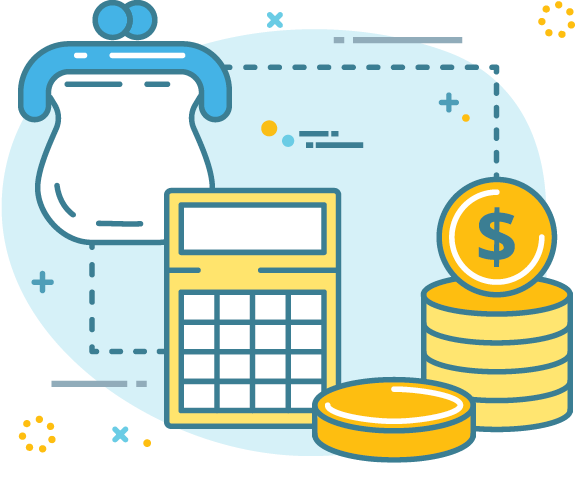
The median income for traditionally published authors who participated in the survey—based solely on their book-related activities—was $12,400. While many writers dream of being traditionally published, it’s important to remember that a traditional publishing deal doesn’t always equate to financial success.
The good news? Self-published author incomes are the only incomes on the rise from those surveyed. As the publishing landscape continues to change, more and more traditionally published authors are choosing to self-publish instead—taking back control of their book, their royalties, and ultimately, their livelihoods.
As you’re embarking on your self-publishing journey, here are a few things to know before publishing a book:
Professional editing is absolutely necessary before publishing your book. Even the Stephen Kings and John Grishams of the world rely on editors to polish their work before publication. Recognize the value that an editor brings to your work and don’t skip this step!
Unfortunately, like any business, there are people out there who care more about making money than about helping you publish a quality book. A high price tag doesn’t always mean quality services. Do your research—ask for sample work from an editor, results from a marketing expert’s campaigns, or references from previous clients.
It’s important to partner with a global distributor, like IngramSpark, that can help you reach bookstores, retailers, and libraries all over the world. Don’t limit yourself with an exclusive deal. You want to be available in all channels where your potential readers are.
Almost every author has a goal of becoming a New York Times bestseller. As self-publishing continues to rise, so does the number of books published every year. Competition is fierce in the publishing industry. How many books would you like to sell in the first six months? How many reviews would you like to have? Take the time to create realistic author goals based on comparable books in your genre.
Join a writing collective, become a patron at your local indie bookstore, and utilize the public library’s resources. Develop relationships with people who can help support you and your book along your publishing journey.
We hope this guide helps you go from writer to published author! Download a copy of the guide (with bonus content) to help you along your publishing journey.
By clicking the "submit" button, you are agreeing to receive future marketing e-mail messages from IngramSpark.